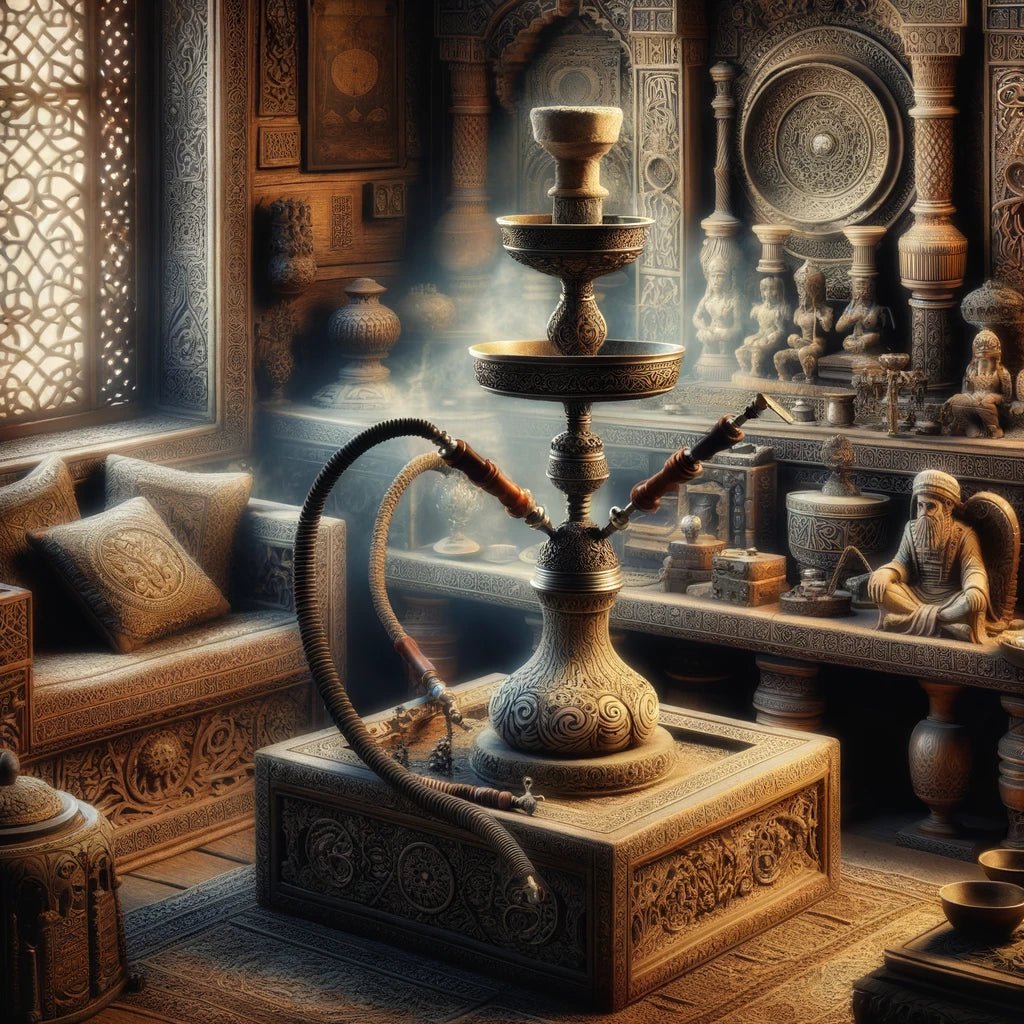
The History of Shisha: From Ancient Times to Modern Day
Share
The History of Shisha: From Ancient Times to Modern Day
Shisha, also known as hookah, narghile, or waterpipe, is a beloved pastime that has evolved over centuries. The rich history of shisha spans continents and cultures, making it a fascinating subject to explore. In this comprehensive guide, we will delve into the origins of shisha smoking, trace its development through different eras, and examine how it has become a modern social phenomenon.
The Origin of Shisha Smoking
The history of shisha can be traced back to the 16th century in the Mughal Empire, particularly in the region that is now India and Pakistan. The shisha, as we know it today, is believed to have been invented by Abu’l-Fath Gilani, a Persian physician at the Mughal court. Gilani devised a system to smoke tobacco through water to purify and cool the smoke. This innovation quickly gained popularity among the Indian nobility and spread throughout the empire.
Early Adaptations and Spread
From its origins in India, shisha smoking spread to Persia (modern-day Iran) and the Middle East. Each region adapted the design and use of shisha to fit local customs and preferences. In Persia, the waterpipe was called "qalyan," and it became an integral part of social gatherings and leisure activities. The Ottomans, who ruled over a vast empire including parts of Southeast Europe, Western Asia, and North Africa, also adopted and refined the waterpipe, calling it "nargile" or "hookah."
Shisha in the Ottoman Empire
The Ottoman Empire played a significant role in popularizing shisha. By the 17th century, shisha cafes, known as "kahvehane," became popular social hubs where people gathered to drink coffee, smoke shisha, and discuss politics and culture. The elaborate and ornate designs of Ottoman shishas reflected the craftsmanship and artistic sensibilities of the time. Shisha smoking became associated with relaxation and intellectual conversation.

The Golden Age of Shisha
During the 18th and 19th centuries, shisha smoking reached its zenith in the Ottoman Empire. Shisha cafes flourished in cities like Istanbul, Cairo, and Damascus, becoming central to the social and cultural life of the region. The designs of shishas continued to evolve, incorporating materials such as glass, brass, and silver, and becoming more intricate and decorative.
The Decline and Revival
The decline of the Ottoman Empire in the early 20th century and the rise of cigarette smoking led to a temporary decline in shisha's popularity. However, shisha never disappeared entirely. In the latter half of the 20th century, there was a revival of interest in shisha, particularly in the Middle East and North Africa. This resurgence was driven by a renewed appreciation for traditional cultural practices and a growing global interest in diverse smoking experiences.
Modern Day Shisha
Today, shisha has transcended its traditional roots to become a global phenomenon. Shisha bars and cafes can be found in major cities around the world, from New York to Tokyo. The modern shisha experience often combines traditional elements with contemporary innovations. For example, many shisha enthusiasts enjoy flavored tobacco, which was popularized in the late 20th century. These flavors, ranging from fruity to minty, add a new dimension to the shisha experience.

Health and Social Aspects
While shisha smoking remains a beloved pastime, it is important to be aware of the health implications. Smoking shisha, like any form of tobacco use, carries health risks. However, many people appreciate shisha for its social and cultural significance. In many cultures, sharing a shisha is a symbol of hospitality and friendship, fostering a sense of community and connection.
Conclusion
The history of shisha is a rich tapestry woven from the threads of various cultures and eras. From its origins in the Mughal Empire to its modern-day global presence, shisha has evolved and adapted, reflecting the changing tastes and values of its users. Whether enjoyed in a traditional café or a trendy bar, shisha continues to be a cherished ritual that brings people together, bridging past and present.
By understanding the history of shisha, we can appreciate not only its cultural significance but also its role in fostering social connections and shared experiences. As shisha continues to evolve, it remains a testament to the enduring appeal of this timeless tradition.
